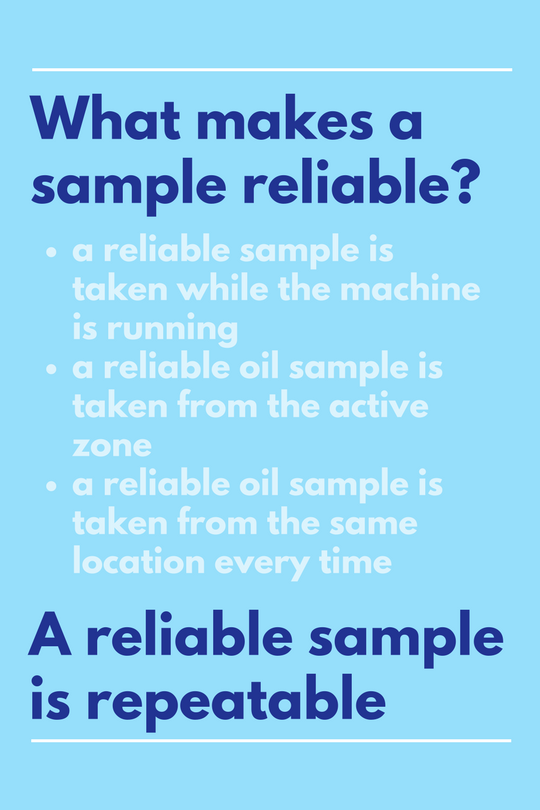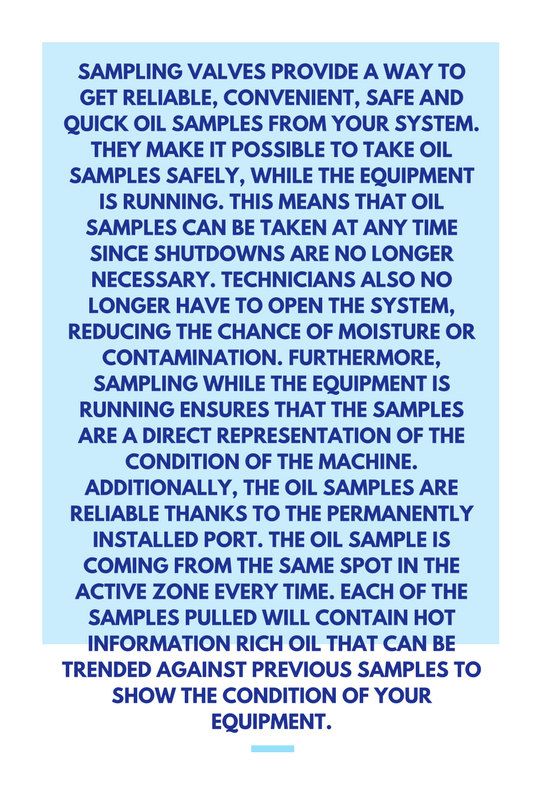Drop-tube sampling is one of the most common methods to get oil samples out of any equipment. As far as sampling methods go, drop tube sampling is simple. Maintenance personnel open the equipment up, insert plastic tubing, and suction the oil out with a vacuum pump. It is easy, and low cost -- all you need is plastic tubing, a vacuum pump, and sample bottle -- the equipment is easily acquirable. However, when it comes to factors that make an oil sample reliable it has its downfalls.

Well it is extremely dangerous to sample while the equipment is running. Thus in order to get a safe oil sample, the equipment needs to be shut down. Shutting the equipment down means the oil will cool and particles will settle. Any samples taken could be misleading in terms of particle counts. For example, test results from particle counts, or ferrous density of analytical ferrography test results can be sharply impaired if the oil sample is taken 1 hour after a shutdown.
Additionally, even with the equipment shut off, it is still extremely difficult to insert the tube into the same spot of the active zone every time. One customer shared his experience with drop-tube sampling, "It is difficult to maintain control of the drop tube. The tube cannot make contact with the wall or bottom of the reservoir contaminating the oil sample. In addition, it is difficult to get a sample from the same zone each time. In addition, it is next to impossible to sample a gearbox while it is running."
Drop tube sampling opens up the possibility of contamination - for your system or your oil sample. Just by using this sampling method you have to open your system up to external contamination. Sampling from a closed system greatly reduces the chances of fluid contamination in dirty and outdoor environments. Also if improper sampling procedures are used, the sample can become contaminated due to residuals left over from the previous sample. Another customer experienced cross contamination issues with his oil samples through drop tube sampling, "It was hard to keep fresh tubing on hand. The hand vacuum pump was often residual oil in it or coolant causing the new sample to be compromised."
80% of survey respondents reported having contaminated samples when using drop tube sampling
 The inability of drop tube sampling to produce repeatable results was demonstrated through a study comparing sampling methods done conjunction with the University of Western Ontario. Three sampling methods were used to draw oil samples from the same piece of machinery, for one week:
The inability of drop tube sampling to produce repeatable results was demonstrated through a study comparing sampling methods done conjunction with the University of Western Ontario. Three sampling methods were used to draw oil samples from the same piece of machinery, for one week:
Method A (Pushbutton sampling valve)
Method B (Sampling valve with tube)
Method C (Drop tube and vacuum pump)
It was found that Method A would be preferred over Method C because of the fact that Method C has high variability in measurements (or resampling Method A has the least variability in particle counts). In addition Method C gave a wide result of particle counts when resampled. Without reliable sample data, maintenance decisions can result in unnecessary maintenance repairs or equipment problems worsening.
There is a better method to get reliable samples from your gearboxes, engines, or any type of equipment -- sampling valves.
Check out the KP Pushbutton for sampling pressurized systems
Check out the LTJ for sampling non-pressurized systems

